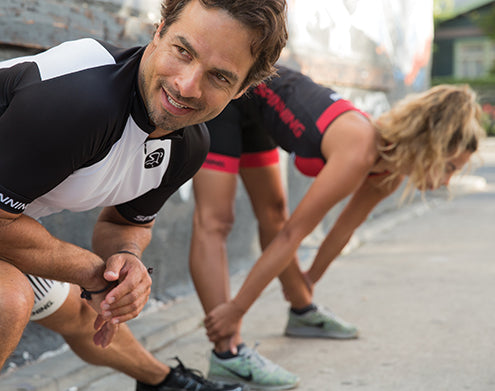Maximize Your Workouts by Measuring And Monitoring Your Cadence in Cycling
Cadence in cycling, or pedal speed, is measured in pedal stroke revolutions per minute (RPM). For example, a cadence of 60 RPM means that one pedal makes a complete revolution 60 times in one minute. Likewise, a cadence of 110 RPM means that one pedal makes a complete revolution 110 times in one minute. So, how do you measure cadence while you’re Spinning®?
How to Measure Cadence
A Spinner® bike with a computer will display your cadence or you can monitor your cadence with periodic cadence checks. Simply count the revolution of one leg for 15 seconds and then multiply by four. Count by holding out one hand and let your thigh tap your palm at the top of each pedal stroke.
Cadence Range For Flat Roads
The cadence range for a flat road is 80–110 RPM, which is based on realistic road cadences in cycling. If you’re tempted to pedal faster, add slightly more resistance first—even a flat road means riding with some resistance. In a Spinning® class, we simulate the challenges of real road cycling, such as headwinds, road friction and bigger gears, by increasing the resistance. How fast is too fast? If your Spinning® cadence is over 110 RPM, it’s too fast. Even when your cadence is under 110 RPM, if you are bouncing in the saddle, that’s a good indication you’re not in control of your pedal stroke. When your cadence is too high with too little resistance, your pedals are turning because of the momentum of the weighted flywheel—it means you’re not working and it’s unsafe.
Cadence Range For Hills
The cadence range for climbing hills is 60–80 RPM. It’s a slower cadence in cycling because there is more resistance on the flywheel, simulating an uphill ride. The more you turn the resistance knob to the right, the steeper the hill, and the slower your pedaling becomes. The lower limit of 60 RPM on a hill is set for safety reasons. To climb a steep hill, find the highest amount of resistance you can maintain while maintaining good form at 60 RPM. If your resistance is so heavy that you cannot maintain at least 60 RPM, you run the risk of putting too much stress on your knees. Your resistance is too high when you need to twist your body and throw your body weight into pushing the pedals downward. See the chart below to understand how to measure your Spinning® cadence through five core movements:
| Spinning® Movement | Cadence | Hand Position |
| Seated Flat | 80-110 RPM | 1, 2 or 2.5 |
| Standing Flats | 80-110 RPM | 2 or 2.5 |
| Jumps | 80-110 RPM | 2 or 2.5 |
| Seated Climbs | 60-80 RPM | 2 or 2.5 |
| Standing Climbs | 60-80 RPM | 3 |
Start Tracking Your Cadence Today
If you’re serious about taking your personal fitness to the next level—or the fitness of your students—you should consider monitoring your performance consistently and accurately using Spinning® accessories, such as cadence sensors and bike computers or one of our apps. If you’re wondering how to measure cadence while Spinning® in a safe, easy, and effective manner, this simple yet state-of-the-art technology is your best bet. Start tracking your cadence and improving your results today.





Leave a comment
This site is protected by hCaptcha and the hCaptcha Privacy Policy and Terms of Service apply.